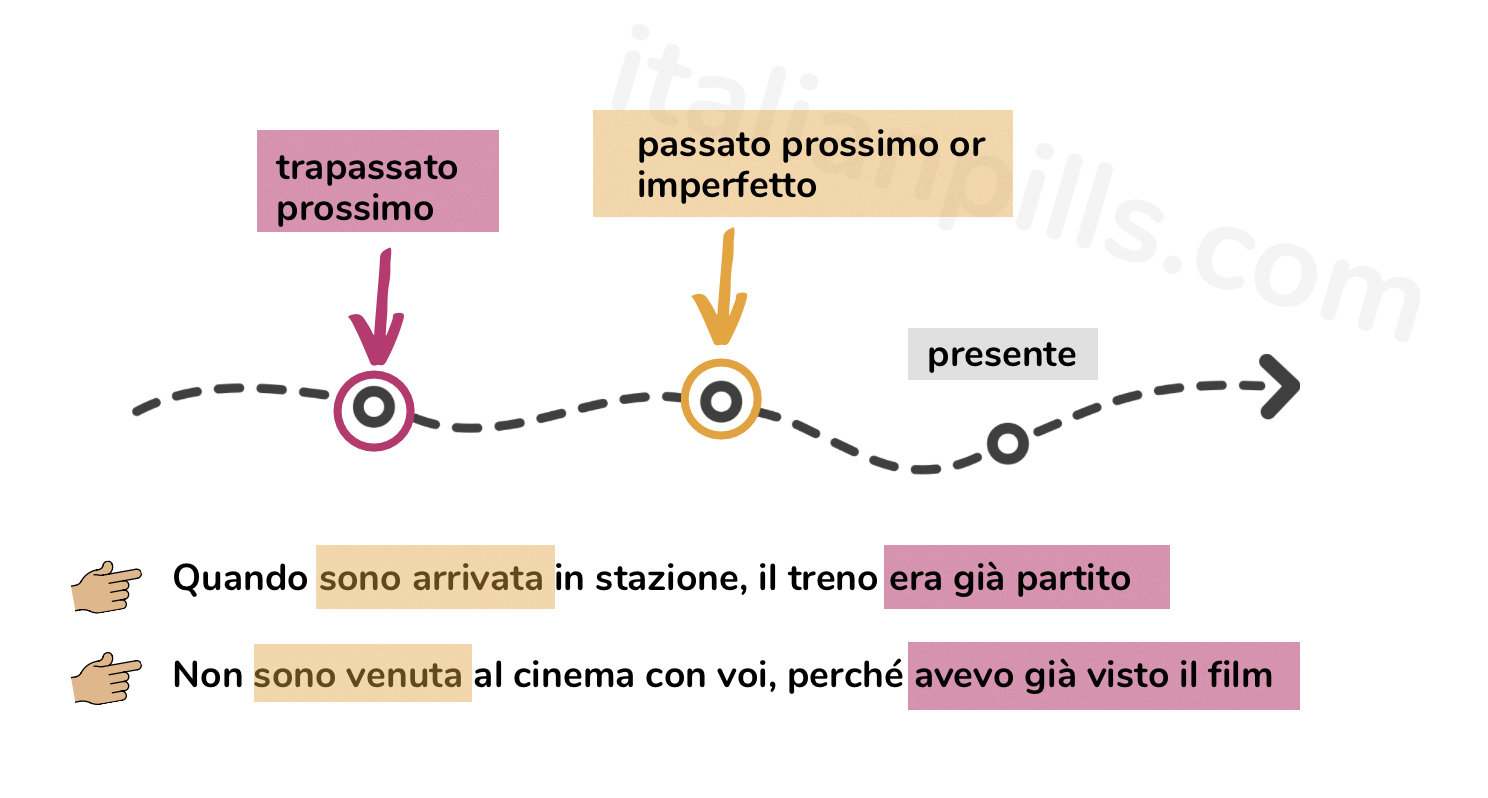One of the past tenses you need to know, especially if you’re at an intermediate level, is the trapassato prossimo. The trapassato prossimo in Italian, or the ‘past perfect’ in English, is a compound tense, which means it is a combination of the auxiliary verbs ‘essere’ or ‘avere’ and the past participle.
How to Conjugate the Trapassato Prossimo
To conjugate the Trapassato Prossimo, we use the imperfect form of the auxiliary, which is ‘ero’/’avevo,’ and the past participle (for example, mangiato/avuto/finito). Whether to use ‘avere’ or ‘essere’ depends on the verb. If you need a refresher on the ‘essere’ verbs, you can check out this post:
The Conjugation of the Trapassato Prossimo
 How to Use the Trapassato Prossimo:
How to Use the Trapassato Prossimo:
The Trapassato Prossimo, similar to English, is used to describe an event that occurred before another. For example, if we imagine a temporal line, it would look like this:

Explanation:
- Quando sono arrivata in stazione, il treno era già arrivato (When I arrived at the station, the train had already arrived)
- Non sono venuta al cinema con voi, perché avevo già visto film (I didn’t come to the cinema with you because I had already seen the movie)
In the first example, arriving at the station occurred after the train had left. Therefore, we have used the “trapassato prossimo” to describe the action that occurred before our arrival, that is to say, that the train had already left.
In the second example sentence, going to the movie theater would happen after the person had already seen the movie.
Comunque, However
Talking about the Trapassato, is actually harder then using it!
Using the Trapassato Prossimo doesn’t require much thought, as it conveniently has its counterpart in English, which is the past perfect tense. Hence, using the trapassato is pretty straightforward, as it corresponds to forms like “had been”, “had done”, “had gone”, etc.
More example sentences:
- Non sono andato a Parigi con i miei, perché l’avevo già visitata l’anno scorso – I didn’t go to Paris with my parents, because I had already visited it last year
- Quando sono tornato a casa, i bambini erano già andati a letto – When I got home, the kids had already gone to bed.
- Quando sono arrivati al ristorante, i tavoli erano già tutti prenotati – When they arrived at the restaurant, the tables were already booked.
- Ho perso il treno, perché avevo fatto tardi – I missed the train because I was late.
The trapassato is often used in narratives in the past tense to describe sequence of events when telling a story, anecdote.
- Trapassato Prossimo vs. Passato Prossimo
The Passato Prossimo, which expresses both the present perfect (I’ve been) and past simple (I was) in English, is the most common Italian past tense and is definitely more common than the Trapassato, which express the past perfect in English (I had been). The difference between the two is that the Trapassato Prossimo expresses something that occurred before another action expressed by the Passato Prossimo.
For example,
- Quando la polizia è arrivata (passato prossimo) i ladri erano già scappati (trapassato prossimo).
- When the police arrived (past simple), the thieves had already escaped (past perfect).







